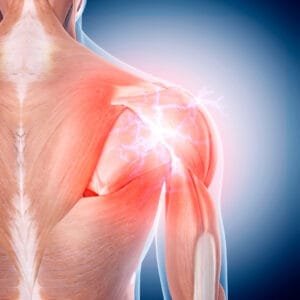Pain: Types, Causes, and Effective Management
Pain is a universal experience that signals the body’s response to injury, illness, or inflammation. While pain can serve as a protective mechanism, it can also become a chronic condition that impacts daily life. Understanding the various types of pain, its causes, and available treatments can help individuals manage and alleviate discomfort effectively.



What is Pain?
Pain is an unpleasant sensory and emotional experience caused by actual or potential tissue damage. It is processed by the nervous system and serves as a critical warning signal, urging individuals to address harmful conditions or injuries. Pain can vary significantly in intensity, duration, and the area affected.
Types of Pain
Pain is categorized based on its origin, nature, and duration:
- Acute Pain: Short-term pain caused by injury or surgery.
- Chronic Pain: Long-lasting pain persisting beyond the usual healing period.
Causes of Pain
Pain can result from a wide range of conditions, broadly classified into physical, neurological, psychological, or environmental causes.
1. Physical Causes
2. Neurological Causes
- Nerve Damage:
- Neuropathic pain from conditions like sciatica or diabetic neuropathy.
- Central Nervous System Disorders:
- Pain caused by conditions like multiple sclerosis or a stroke.
3. Psychological Causes
- Stress and Anxiety:
- Can amplify pain perception.
- Psychosomatic Pain:
- Pain arising from emotional or mental distress.
4. Environmental and External Causes
- Postural Issues:
- Poor posture causing back or neck pain.
- Environmental Factors:
- Temperature extremes or exposure to toxins.
Symptoms of Pain
The characteristics of pain vary depending on its type and underlying cause. Common symptoms include:
Acute Pain Symptoms
- Sudden onset.
- Sharp or stabbing sensation.
- Resolved as the injury heals.
Chronic Pain Symptoms
- Persistent or intermittent.
- Can feel dull, throbbing, or burning.
- Accompanied by fatigue, mood changes, or sleep disturbances.
Neuropathic Pain Symptoms
- Tingling or burning sensations.
- Numbness or hypersensitivity.
- Electric shock-like pain.
Diagnosis of Pain
Accurately diagnosing pain involves identifying its source and understanding the individual’s symptoms. A healthcare provider may use:
1. Medical History and Physical Examination
- Assessing the duration, location, and severity of pain.
- Identifying potential triggers like injuries or illnesses.
2. Imaging Tests
- X-rays, MRIs, or CT Scans:
- Detect fractures, joint issues, or internal injuries.
3. Neurological Assessments
- Electromyography (EMG):
- Evaluates nerve and muscle function.
4. Lab Tests
- Blood tests to identify inflammation, infections, or autoimmune conditions.
Treatment for Pain
Pain management focuses on alleviating discomfort, treating the underlying cause, and improving quality of life. Treatment options range from medications to lifestyle changes and therapies.
1. Medications for Pain Relief
- Over-the-Counter (OTC) Pain Relievers:
- Acetaminophen or ibuprofen for mild to moderate pain.
- Prescription Medications:
- Stronger drugs like opioids (e.g., morphine) for severe pain.
- Neuropathic Pain Medications:
- Antidepressants (e.g., amitriptyline) or anticonvulsants (e.g., gabapentin).
2. Physical Therapies
- Physiotherapy:
- Exercises to improve mobility and reduce pain.
- Massage or Chiropractic Care:
- Alleviates tension and improves posture.
3. Interventional Treatments
- Nerve Blocks:
- Injections to numb affected areas.
- Epidural Steroid Injections:
- Reduce inflammation and relieve pain in the spine.
4. Alternative Therapies
- Acupuncture:
- Stimulates nerve endings to relieve pain.
- Mind-Body Techniques:
- Meditation, yoga, or biofeedback to manage pain perception.
Preventing Pain
While not all pain is preventable, certain strategies can reduce the risk of developing chronic or acute pain:
1. Maintain Physical Activity
- Regular exercise strengthens muscles and joints, reducing the risk of injuries.
2. Adopt Ergonomic Practices
- Use proper posture and ergonomically designed furniture.
3. Stay Hydrated and Eat a Balanced Diet
- Promotes overall health and reduces inflammation.
4. Manage Stress
- Practice relaxation techniques to reduce the psychological impact on pain.
Complications of Pain
If left untreated, pain can lead to complications that affect both physical and mental well-being:
- Reduced Mobility:
- Chronic pain can limit physical activity, leading to muscle weakness and stiffness.
- Sleep Disorders:
- Pain often disrupts sleep, exacerbating fatigue and irritability.
- Mental Health Issues:
- Long-term pain can cause depression, anxiety, or social withdrawal.
- Dependence on Pain Medications:
- Overuse of painkillers, particularly opioids, can lead to addiction.
FAQs about Pain
1. What is the difference between acute and chronic pain?
Acute pain is short-term and resolves as the underlying cause heals, while chronic pain persists for more than three months and may not have a clear cause.
2. How can I manage pain without medication?
Non-medication approaches include physical therapy, acupuncture, massage, and mind-body techniques like meditation or yoga.
3. When should I see a doctor for pain?
Seek medical attention if the pain is severe, persistent, or accompanied by symptoms like swelling, fever, or numbness.
4. Can stress cause physical pain?
Yes, stress can amplify pain perception and lead to muscle tension, headaches, or psychosomatic pain.
5. What are natural remedies for pain relief?
Natural remedies include hot or cold compresses, turmeric for inflammation, ginger tea for muscle pain, and lavender essential oil for relaxation.
Conclusion
Pain is a natural response to injury or illness, but it can become a debilitating condition if not managed effectively. By understanding the causes and types of pain, individuals can explore a wide range of treatments, from medications and physical therapy to alternative therapies and lifestyle adjustments. If you experience persistent or severe pain, consult a healthcare provider to identify the underlying cause and develop a personalized treatment plan. With the right approach, pain relief and improved quality of life are achievable.
